Have you check out chapter three of THE GREAT CONNECTICUT CAPER yet? You’ll definitely want to after reading this interview to see what Beth Lovell has created as an illustration for the Caper. All the beautiful artwork on this post was graciously provided by Beth. Let’s give her a big welcome!
What is your typical approach when sitting down to start a new project?
I draw or paint every day and usually my work is completed in one fell swoop. I work anywhere from 5 minutes to an hour or longer on a particular piece, usually.
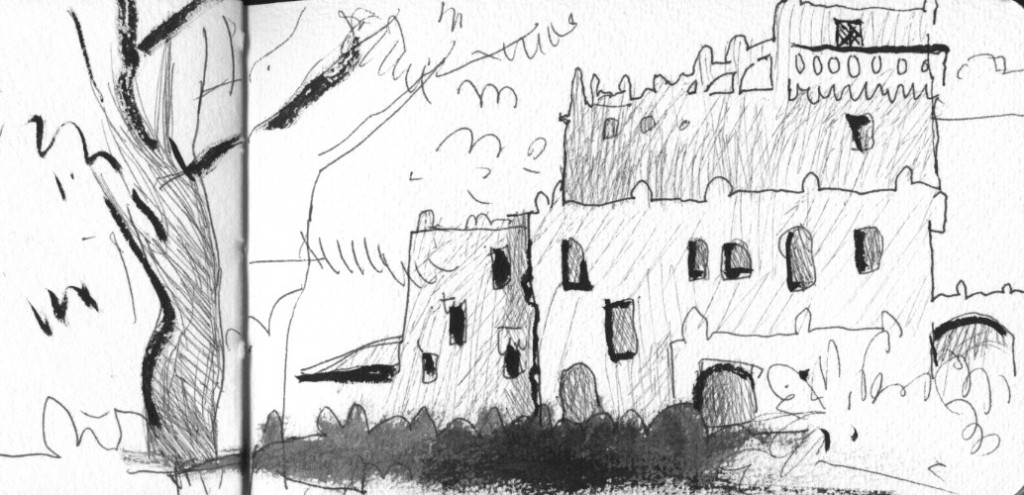
Did your approach differ at all for creating your illustration for the Great CT Caper?
Yes, I did multiple sketches for the different characters imagining how they might look, and I sketched and took loads of photos on site at the locations that were mentioned in my chapter and at Gillette Castle itself. I wanted to have as many resources in my own hand as possible for completing the assignment and I prefer if possible to work from observation rather than photos. I did have to Google search for some character ideas however. I scanned all the drawings and paintings and sketches and made a collage in Photoshop laying everything out like I wanted. I printed and re-drew on the prints, and rescanned and re-collaged everything several time before I was happy with it. My husband is a Photoshop expert so he had a hand in it as well.
What was your biggest challenge for creating a piece of artwork for the Great CT Caper?
Working under the deadline of a week was exhilarating and frantic. I think artists secretly like the pressure of a deadline because it focuses you like nothing else can!
Did you do any particular research for this project?
I sketched on location at many of the parks mentioned in the chapter. It was fun to see a few places in Connecticut that I had not yet visited. Connecticut offers quite a bit of variety in terms of terrain, there is the shoreline, beaches, wooded hiking trails, really interesting and unusual architecture like Gillette Castle.
I did Google searches to come up with a couple of characters in my illustration and that was loads of fun. If you have something particular in mind when you start your image search it is fun to see how close you can get to that idea, but also there is a random element there.
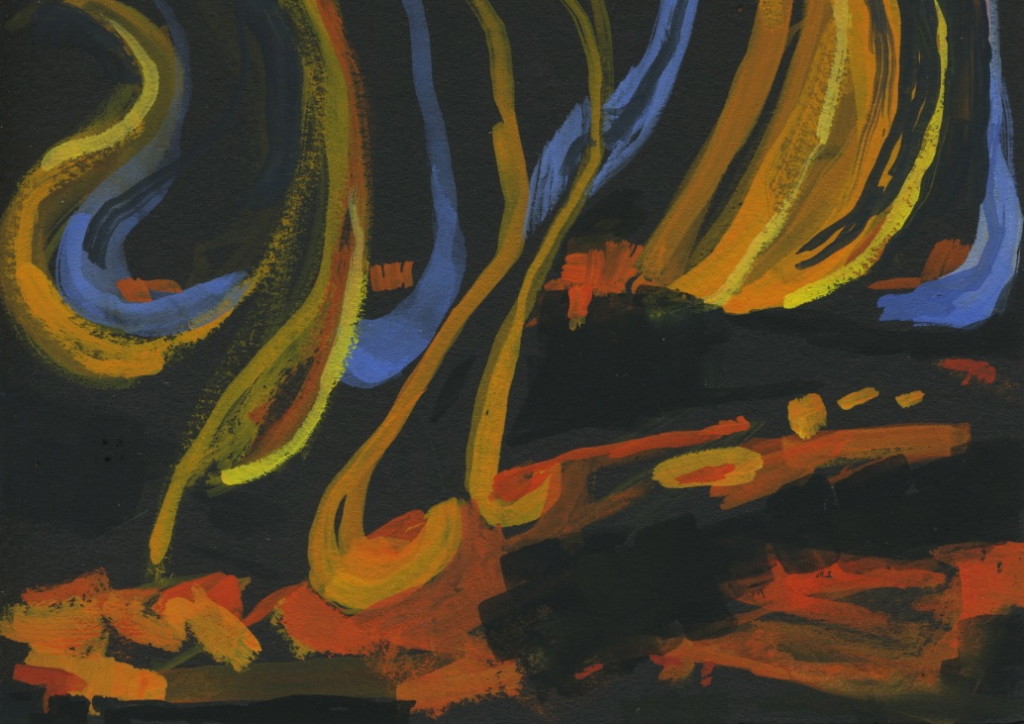
How did you get started in illustrating?
I have been doing a drawing or painting every day as challenge to keep art a significant part of my life since 2009. I was trained as an oil painter, but I seriously love drawing, it is so fun and direct, it seems so much more natural of a way of making things for me and I just cannot stop doing it. My drawings have a kind of illustrative quality so I have just been going in that direction more and more. I would love to illustrate more professionally but I have only done a few published things, if you count web venues. I would love to illustrate a graphic novel.
What is your work space like? Do you have any other places you like to work?
I work at home, in our dining room which has my computer desk and scanner, and a large table made from a wooden door. It is a fabulous workspace that everyone in the family uses for various projects, homework, and whatnot.
I also have a small field kit of art supplies that travel with me at all times so I can sketch in the supermarket, or out and about whenever I see something that is visually interesting. I love sketching on location and have drawn many times at the Peabody, and coffee shops, and the New Haven green and around.

What artists inspire you?
This is a big question, and for this interview, I will focus just on illustrators. Before I had children, most of my influences were people who made paintings, but since my kids were little I have just gone mad for children’s book illustrators, cartoonists, and people who make graphic novels. A few who I admire greatly are Mimi Grey whose collaged children’s books are just fabulous and funny she did Traction Man, Kate Beaton who draws Hark a Vagrant, Lucy Knisley whose graphic novel Relish is just fabulous, and Isabel Greenberg who drew Encyclopedia of Early Earth.
Besides chapter three of the Great CT Caper, where else might people find your work?
I have work at www.bethlovell.com. I have a Facebook group for anyone who’d like to share their own daily drawings. https://www.facebook.com/groups/cawdailydrawing/
It goes along with a course I am teaching at Creative Arts Workshop in New Haven, but the Facebook group is open to anyone to join. The more the merrier!
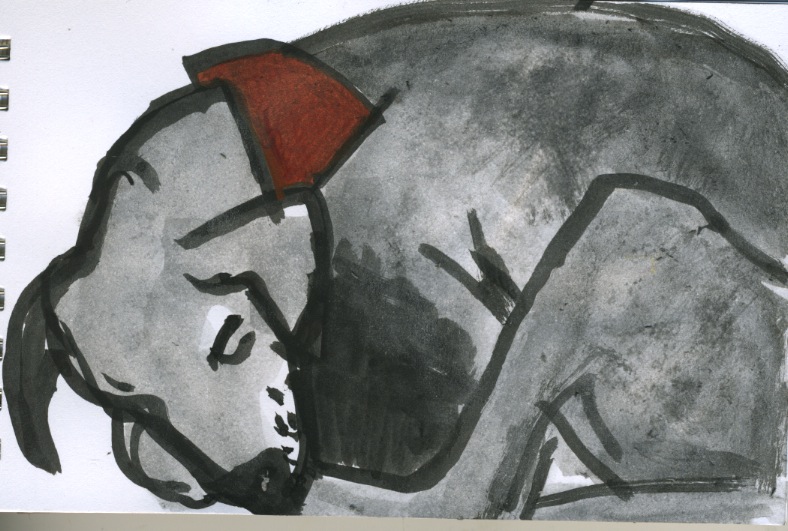
Any upcoming projects you’d like to mention?
I recently had some sketches of Occupy New Haven in the CT Bound flatfile show at Artspace, which is a small show accompanying the CT(un)bound Book Art show going on there right now. The show was up through January 31st. http://artspacenh.org/include/404.asp?404;https://artspacenh.org:443/galleries/gallery5/
And finally, please share something silly/unusual/interesting that you don’t normally share in interviews…
This does not really fit your question, but here goes:
One of my favorite young adult novels is serially written collaboratively by a bunch of different fabulous authors, it is called Click! and it includes Nick Hornby (Author), David Almond (Author), Eoin Colfer (Author), Roddy Doyle (Author), Deborah Ellis (Author), Margo Langan (Author), Gregory Maguire (Author), Ruth Ozeki (Author), Linda Sue Park (Author), Tim Wynne-Jones (Author).
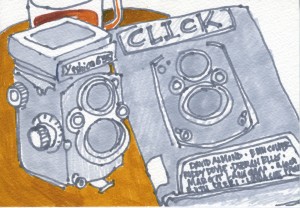
So when I heard about the collaborative CT Caper project, I really wanted to try for it. I was so excited to be chosen as one of the illustrators on this project. I’ve always wanted to work on a graphic novel so this seemed like a good step in that direction.
The thing I want to say is that my sketch that I submitted was really sketchy and fast and I had wanted to make a whole perfect ink drawing or graphic novel spread out of it, but procrastinating artist that I was, the deadline approached, and I had to decide if I thought my sketch was good enough to submit. In my heart of hearts I knew I could do better, but in my heart of hearts I knew I also really really wanted to participate so at 11:45 pm I uploaded what I had and I am so glad I did. I want to share that with any and all artists, writers and students, go ahead and try, please don’t wait til you feel like everything is perfect, you are good enough exactly as you are, right this minute!
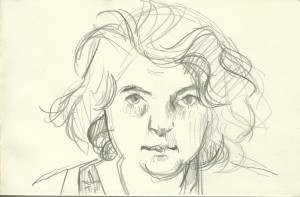 About the Illustrator:
About the Illustrator:
Beth Lovell is a Connecticut artist who has posted a daily drawing or painting online since 2009, a practice that began as a New Year’s Resolution. Beth has an MFA in Painting from Yale School of Art and a BFA from Indiana University, Bloomington. You can find her work at www.bethlovell.com and littlewolfpress.etsy.com.
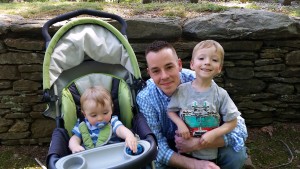

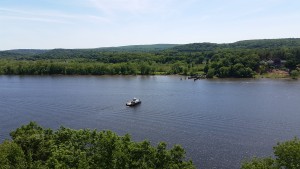

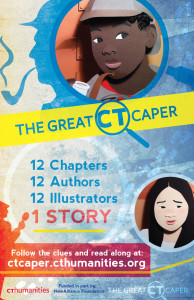

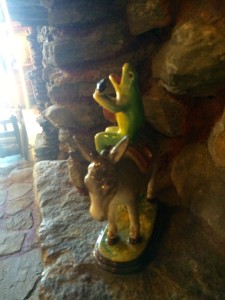
 Now I was ready to visit the secret landmark myself, to hammer out the details of the final chapter. Armed with notebook and cell phone camera, I soaked in the atmosphere and asked lots of questions. I took photos. By the time I was done, I knew that this setting would work perfectly.
Now I was ready to visit the secret landmark myself, to hammer out the details of the final chapter. Armed with notebook and cell phone camera, I soaked in the atmosphere and asked lots of questions. I took photos. By the time I was done, I knew that this setting would work perfectly.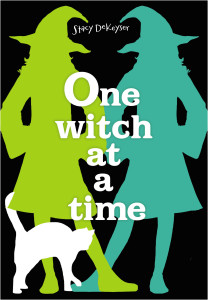
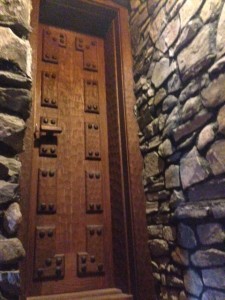
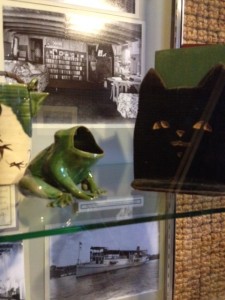
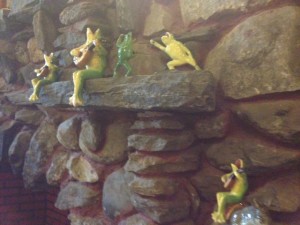 But here’s the problem with only using online research: it’s not always correct. My original draft of chapter five involved excitement when a dinosaur statue in the field at Dinosaur State Park came to life and started chasing Thomas and Norm. But I was unsure of two things: 1) it’s been a long time since my son, now 21, was obsessed with dinosaurs and I knew every single dinosaur ever, so I wanted to check I was using the correct name and 2) I was worried because there is also a Dinosaur State Park in Texas and some of the same pictures that were tagged as being in CT were also tagged as being in Texas.
But here’s the problem with only using online research: it’s not always correct. My original draft of chapter five involved excitement when a dinosaur statue in the field at Dinosaur State Park came to life and started chasing Thomas and Norm. But I was unsure of two things: 1) it’s been a long time since my son, now 21, was obsessed with dinosaurs and I knew every single dinosaur ever, so I wanted to check I was using the correct name and 2) I was worried because there is also a Dinosaur State Park in Texas and some of the same pictures that were tagged as being in CT were also tagged as being in Texas.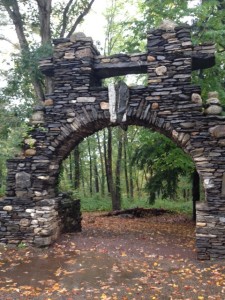 This is where being a journalist and understanding the importance of fact-checking helps me as a writer. I emailed Dinosaur State Park and explained my dilemma. I received an incredibly helpful email back from Meg Enkler, the Environmental Education Coordinator at Dinosaur State Park. Meg confirmed that the outside dinosaur statues must be at the Texas park, because the big statue of a Dilophosaurus, is indoors at Rocky Park. That nixed my existing plot line, but Meg helpfully suggested several alternatives, one of which I used. Thank you, Meg!
This is where being a journalist and understanding the importance of fact-checking helps me as a writer. I emailed Dinosaur State Park and explained my dilemma. I received an incredibly helpful email back from Meg Enkler, the Environmental Education Coordinator at Dinosaur State Park. Meg confirmed that the outside dinosaur statues must be at the Texas park, because the big statue of a Dilophosaurus, is indoors at Rocky Park. That nixed my existing plot line, but Meg helpfully suggested several alternatives, one of which I used. Thank you, Meg!
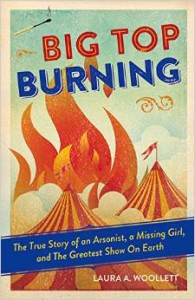 My first book,
My first book, 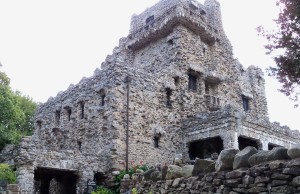 many carved wooden doors, each one unique. Fiction feels its most real when the sensory details are just right. Since our story would take place at this real location, it felt important for me to experience what Li-Ming and Thomas would first hand.
many carved wooden doors, each one unique. Fiction feels its most real when the sensory details are just right. Since our story would take place at this real location, it felt important for me to experience what Li-Ming and Thomas would first hand.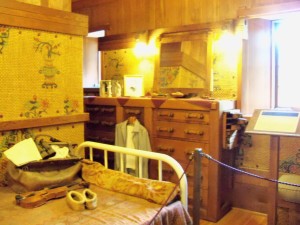 the plot. If the detail was not important to the scene, I cut it, even if it were true. Somewhere in Chapter 4, I took a bit of artistic license. Can you tell where?
the plot. If the detail was not important to the scene, I cut it, even if it were true. Somewhere in Chapter 4, I took a bit of artistic license. Can you tell where?

























